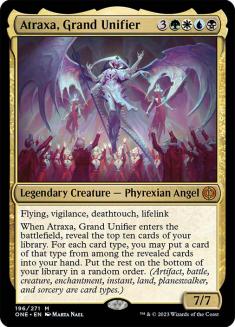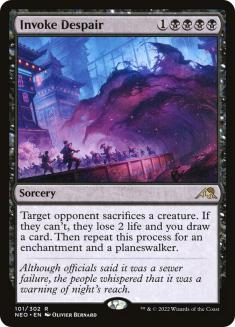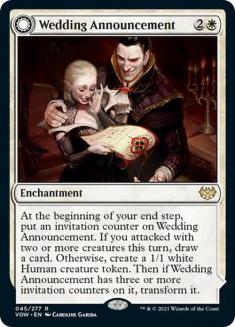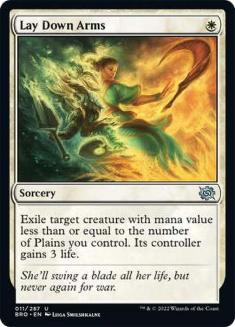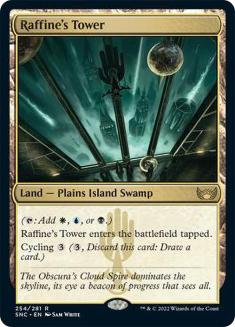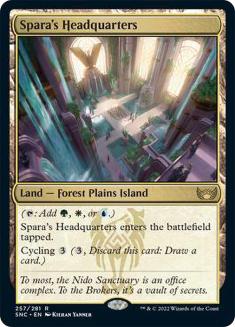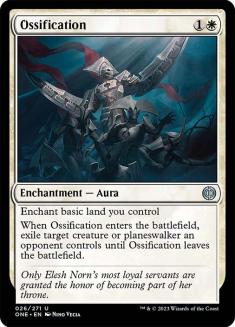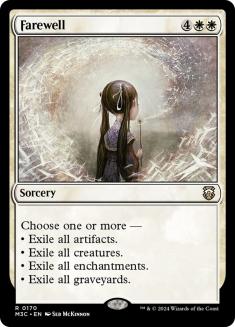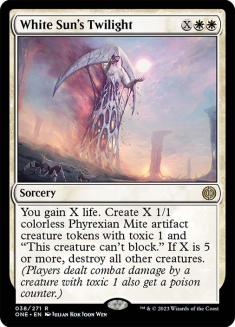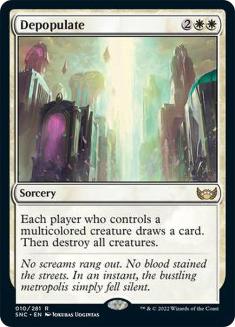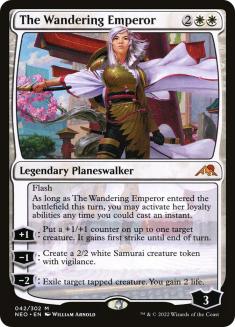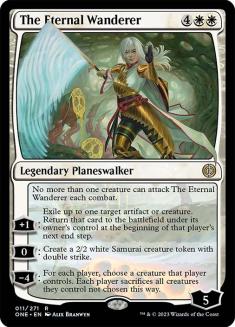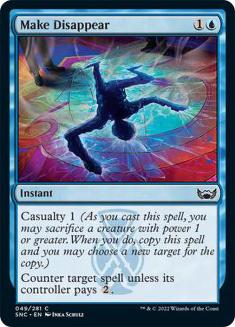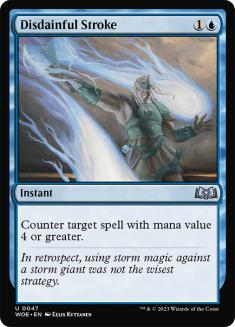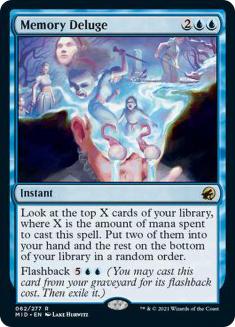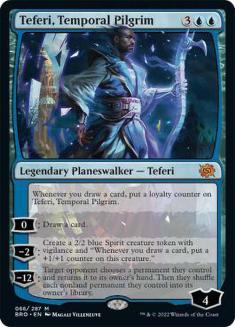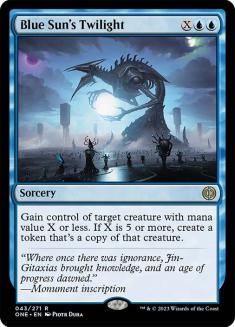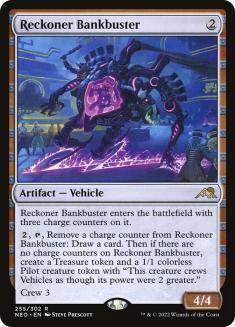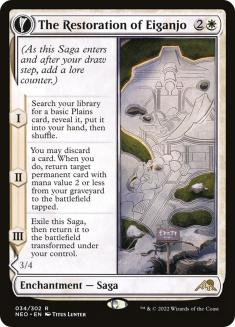With the upcoming Regional Championship being Standard, Pro Tour hopefuls have returned to the format. It feels like just yesterday when Standard was the talk of the town and every grinder around the world was excited for preview season to hit. With each new set, Standard was rejuvenated, rewarding those competitive players that solved it before the masses. That is what I yearn to experience again, though it is unlikely to ever return.
MTG Arena and Magic Online (MTGO) are still vibrant and healthy, with players across the competitive spectrum adding data by the second. The official Magic and third-party strategy sites are actively mining those data, giving us the best and most-played decks in real time. In addition, the influx of information from social media contributors makes it difficult to fall behind on what is hot in any given metagame. This is the world we live in and I do not think it is necessarily a bad one.
Having this level of information may homogenize deck choices, but gameplay is what matters most. I am enjoying Standard right now, even if the majority of decks at the top are all midrange variants. These top decks, like Mono-White, Grixis, Five-Color, and Esper Midrange are all beatable. The gameplay against them is interactive, which is why we see some aggro decks break through at the top of the metagame. We have not seen much control, but I am hoping that changes as we get closer to the Regional Championship in San Diego next month.
The Courage to Lay Down Arms
Control has the tools to be successful in this format. The disruption lines up well against the world of midrange and can adjust to handle the aggro decks if they were to rise in popularity. It has been a long time since control has had a one-mana removal spell in Standard, especially one so powerful as Lay Down Arms. It’s so strong that it has replaced the removal in Pioneer, a move that shocked me until I played some matches with it. The thought of cranking up the Plains count seemed absurd, but it ended up working perfectly. Even in Standard, a ton of basic Plains won’t break the bank like I thought it would.
The manabase for Azorius Control requires careful crafting to accommodate Lay Down Arms, beyond the additional basic lands. The Triome army had to come in, increasing the number of lands that enter the battlefield tapped. This is a drawback I was used to for years in Standard and it does not impede gameplay here. There are very few times when the tapped lands cause me to miss on curve, as many of the spells have low costs. It comes back to bite you more in control decks that require each land untapped in the mid- to late-game to cast the expensive top end. In this version of Azorius Control, getting there with the man base has not been a problem.
Ossification Nation
In addition to Lay Down Arms, Ossification has been an absolute all-star. Regarding power level, Ossification is likely a stronger card for control. Azorius Control in Standard has historically had issues dealing with planeswalkers, while black-based control decks swat them away with ease. The combination of these two removal spells has almost eliminated the competition. I am down to just a single copy of March of Otherworldly Light, a move that I never saw myself making in Standard. This just shows how far the removal has come for control, and it is likely we will continue to see upgrades in that department.
Since the white is too good to pass up in the targeted removal category, it shapes how to develop the rest of the deck. The only restriction is the manabase, since Lay Down Arms is a must-play for control to be successful. The rest of the deck practically builds itself, using many powerful cards from the most recent set. Any successful control deck in Standard must balance the removal, disruption, sweepers, card draw, and win conditions. The following deck almost has it all, with only a slight weakness in the win condition category.
The List
Planeswalkers (8)
Lands (26)
Spells (26)

Sweepers
To complement the targeted removal, Farewell and Depopulate have stepped up. Farewell is still the best sweeper in Standard, and I cannot imagine winning with a control deck without it. The creatures continue to be too resilient, and having an easy answer for artifacts, enchantments, and graveyards attached is a huge bonus. Whenever I am digging for outs when things have gotten out of hand, Farewell is there for me. I have toyed with a few other configurations of sweepers, but it is tough to beat the best.
White Sun’s Twilight was in the conversation for a bit and did not make the cut here. If aggro was more prevalent, it would outshine Farewell in most scenarios. The lifegain attached is the big deal, not necessarily the creatures that follow. The ability for that card to put you out of Mono-Red Aggro range does tempt me, but it is not as consistently strong as the competition. The single Depopulate could become that if the metagame calls for it, even though it is an expensive replacement. Depopulate has been a strong out to have in the mid-game in certain scenarios, which is the reason it is included here.
Come Wander with Me
Adding to the strength of white-based control are the planeswalkers. The Wandering Emperor needs no introduction and continues to be a staple for control decks across multiple formats. When that occurs, it is difficult to cut it from Standard, where it should hypothetically be broken. It is quite good in Azorius Control and is the backbone of Mono-White Midrange. It alone is enough to play white-based win conditions, but there is one additional juggernaut on that roster.
The Eternal Wanderer is the exact planeswalker we needed to up the win condition strength of Azorius Control. It has been lacking for so long, with fragile creatures and flimsy planeswalkers. The Eternal Wanderer is nearly impossible to kill in combat, and it defends itself easily on the battlefield. The creatures it generates close the game quickly compared to the other control options out there.
Even with these powerful planeswalkers that make threats, I have learned to make plays quickly with this deck to reach the finish line. It is not as slow as it used to be; however, it requires a strong pace of play to deal lethal damage in time.
Make Disappear
The blue side of this deck is not as strong, but it does pair well. I have been impressed with Make Disappear, which may be as close to Mana Leak as we are going to get. Having a two-mana disruption spell that hits all targets is vital for control’s success. I often get to counter spells for four by sacrificing one of my many creature tokens left behind by a planeswalker. This bonus makes me feel less bad about holding copies in the late-game. Four copies of Make Disappear are too many, with three feeling like the perfect number.
More Counterspells
Make Disappear cannot be the only blue disruption spell. In a world of midrange, counterspells are required to stay competitive in Standard. The creatures, permanents, and spells they summon all have devastating effects when hitting the battlefield. It is a losing proposition to one-for-one the opponent with removal, even if our answers are glorious and strong. Mediocre disruption is better than stellar removal at times, which is why Disdainful Stroke and Negate are back in business.
I have accepted that Negate is the best hard counter I will have in Standard until the day I retire. Luckily, it is not that bad in this format, since the most dangerous spells are noncreature. I am up to two copies in the main with the other two in the sideboard, making sure that fewer planeswalkers, Invoke Despairs, and Wedding Announcements resolve. Disdainful Stroke hits many of the same targets as Negate, but offers some relief against the few problematic creatures that the late-game may have in store for us. The most powerful is Atraxa, Grand Unifier, a creature we do not want to see enter the battlefield. I have countered many Atraxas with Make Disappear and Disdainful Stroke, an essential play for consistent control wins.
Big and Blue
The best blue card in the deck is Memory Deluge, another staple from older formats. It is difficult to not sleeve up cards that define control in Modern and Pioneer, so Memory Deluge makes the team as a four-of. The spicier blue cards are Blue Sun’s Twilight and Teferi, Temporal Pilgrim. These two additions help win the game, partnering with the white planeswalkers. Teferi has been dynamite, producing gigantic threats and drawing cards as needed. The creatures get to an outrageous size with the normal card draw, cycling lands, and the triggers from The Celestus.
Blue Sun’s Twilight has relevant text in the mid-game and is backbreaking in the late-game. Taking over a giant creature is one thing, but also making a copy takes this card to the next level. This card has overperformed so much that it demanded a second copy in the sideboard. There are very few matchups, excepting the blitz aggro decks, where Blue Sun’s Twilight does not shine.
Sideboard Surprises
The sideboard has many cards that may shock my readers. Reckoner Bankbuster and The Restoration of Eiganjo have seen significant play in the maindeck, but they don’t make the initial roster in this version of Azorius Control. I initially had more of these cards in the starting 60, but they directly led to losses to aggro and faster midrange decks. Having too many cards that do not disrupt the opponent’s gameplay is detrimental to control, especially with how powerful their cards have become.
No matter how much I want it to be, The Restoration of Eiganjo is not in the same category of Fable of the Mirror-Breaker. They can tap out for their red enchantment and add enough power to the battlefield, while we cannot. Control must rely on its reactive disruption to keep its head above water, which is what this version is attempting to do.
When facing a slower deck, the sideboard adds those grindy elements into the mix. The rest of the sideboard has additional blue disruption and a set of spells to help defeat white and red-based aggro decks. Having that conversation package to beat aggro decks is needed, since the maindeck is crafted to be stronger against the better decks of the format. This sideboard gives us game against all the current top decks of Standard.
As the format evolves, so will we. Still, I doubt I will play other control colors with the number of tools Azorius Control currently has. Good luck to those battling in the Regional Championship!


